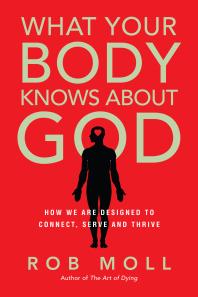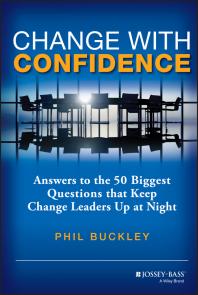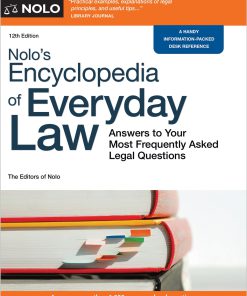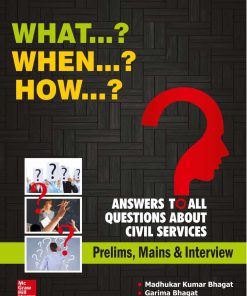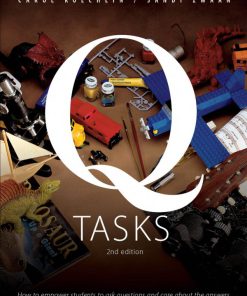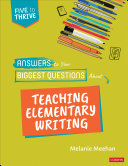Answers to Your Biggest Questions about Teaching Elementary Reading Five to Thrive 1st Edition by Christina Nosek 1071876945 9781071876947
$50.00 Original price was: $50.00.$25.00Current price is: $25.00.
Answers to Your Biggest Questions about Teaching Elementary Reading Five to Thrive 1st Edition by Christina Nosek – Ebook PDF Instant Download/Delivery: 1071876945, 9781071876947
Full download Answers to Your Biggest Questions about Teaching Elementary Reading Five to Thrive 1st Edition after payment
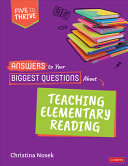
Product details:
ISBN 10: 1071876945
ISBN 13: 9781071876947
Author: Christina Nosek
Teach reading right with just-in-time expert advice! Whether you’re new to teaching reading or if you are a veteran whose goal is to focus on authentic reading instruction, this book is designed to be an on-the-desk companion, providing answers to your burning teaching questions at the moment you most need them. A lot has changed in reading instruction over the past decades, with old assumptions and tired curricula making way for both trusted and new best practices. Answers to Your Biggest Questions About Teaching Elementary Reading, written by a veteran teacher who’s an expert in literacy instruction, offers research-backed, classroom-tested guidance to set you on the right path. Through practical teaching strategies, classroom examples, actionable steps, further reading suggestions, and more, you’ll learn to Build and maintain an inclusive, equitable classroom reading community Structure, organize, and plan student-centered, responsive reading instruction Design and implement compassionate, effective assessment methods Engage and empower students to develop agency as readers You became a teacher to teach students—not curriculum. With this indispensable book by your side, you’ll develop practices that prioritize student well-being and success.
Answers to Your Biggest Questions about Teaching Elementary Reading Five to Thrive 1st Table of contents:
1 HOW DO I BUILD AND MAINTAIN A READING COMMUNITY?
What Is My Own Identity as a Reader?
How Do I Get to Know My Students as Readers?
How Can I Support My Students in Building and Celebrating Their Identities as Readers?
How Can I Make Reading Relevant for My Students?
How Do I Start to Build and Maintain a Reading Community?
How Can I Set Up Conditions to Foster Authentic Student Talk and Collaboration?
How Do I Involve Families and Caregivers in Their Child’s Reading Life?
How Can I Continually Work to Make My Teaching Culturally and Linguistically Relevant?
2 HOW DO I STRUCTURE, ORGANIZE, AND PLAN MY READING INSTRUCTION?
What Are the Habits of Engaged and Joyful Readers?
What Are the Skills of Proficient Reading?
What Are Some Things to Keep in Mind About the Similarities and Differences in Fiction and Nonfiction Reading?
What Should a Reading-Centered Classroom Look and Sound Like?
How Do I Build and Organize a Classroom Library?
How Do I Support Students in Choosing Books?
How Will I Organize My Classroom Time to Ensure Students Are Reading Enough?
What Materials Will Students Need, and How Will They Be Stored?
How Do I Plan the Scope and Sequence of What to Teach for the Year?
How Will I Know What to Teach Next?
How Can I Plan to Support Students With Specialized Learning Plans?
How Can I Plan to Support All of the Different Needs of the Readers in My Class?
3 WHAT ARE THE KEY INSTRUCTIONAL PRINCIPLES TO KNOW AND USE?
What Are the Different Choices and Models I Have for Instruction?
What Are the Different Components of Balanced Literacy in Reading Instruction?
How Should I Balance Whole-Group Instruction With Small-Group and Individualized Instruction?
How Do I Deliver a Lesson to the Whole Class?
How Do I Make the Most of an Interactive Read Aloud?
How Do I Make the Most of Student Independent Reading Time?
What Are Some Different Structures for Small-Group Learning?
How Does a Reading Conference Go?
How Can I Incorporate Reading Throughout the Entire School Day?
What Are Some Special Considerations in the K–1 Classroom?
4 HOW DO I USE ASSESSMENT IN THE SERVICE OF STUDENTS?
What Is Formative Assessment in Reading Instruction?
How Do I Approach Assessment From an Asset-Based Perspective?
What Are Some Common Formative Assessment Methods?
How Do I Keep Track of My Students’ Different Strengths and Next Steps as Readers?
How Will I Know What to Assess?
How Will I Know When to Expect Mastery?
How Can I Assess if Students Are Understanding While I’m Teaching?
What Do I Do if I Feel a Student May Need Extra Support Outside of Classroom Time?
5 HOW DO I SHIFT AGENCY TO STUDENTS, ENGAGING AND EMPOWERING THEM AS READERS?
What Is Student Agency in Reading?
What Role Does Engagement Play in Agency?
What Are Different Ways I Can Provide Choice to Students?
What Are Some Ways I Can Encourage Student Feedback and Decision-Making?
What Are Some High-Impact Conditions and Activities That Promote Student Agency?
How Can I Support Students in Reflecting on Their Strengths and Next Steps as Readers?
What Are Some Ways I Can Support Students’ Authentic Response to Reading?
6 WHERE DO I GO FROM HERE?
Appendix
Appendix A. Grades K–1 Reading Interest Survey and Teacher Directions
Appendix B. Grades 2–3 Reading Interest Survey
Appendix C. Grades 4–5 Reading Interest Survey
Appendix D. Teacher Observation Survey
Appendix E. Online Sources for Learning About and Staying Informed on Children’s Literature
Appendix F. Common Questions and Concerns From Parents and Caregivers About Reading
Appendix G. Weekly Reading Instructional Plan
Appendix H: Class List With Checkboxes
Appendix I: Reading Three Goals Formative Assessment Form
Appendix J: Individual Student Assessment Form
References
Index
People also search for Answers to Your Biggest Questions about Teaching Elementary Reading Five to Thrive 1st :
answers to teacher interview questions
how many questions do teachers answer in a day
how to answer the why this school question
questions to ask your teacher about them
Tags:
Christina Nosek,Biggest Questions,Teaching Elementary
You may also like…
Business & Economics - Management & Leadership
Uncategorized
Know Your Rights Answers to Texans Everyday Legal Questions 9th Edition Richard M Alderman
Jurisprudence & Law - General & Miscellaneous Law
Medicine
100 Questions Answers About HIV and AIDS 5th Edition by Paul Sax ISBN 9781284200737 1284200736
Biography & Autobiography - Reference
Uncategorized
Education Studies & Teaching - School Education & Teaching
Answers to Your Biggest Questions About Teaching Secondary Math 1st Edition Frederick L. Dillon
Education Studies & Teaching - Elementary


